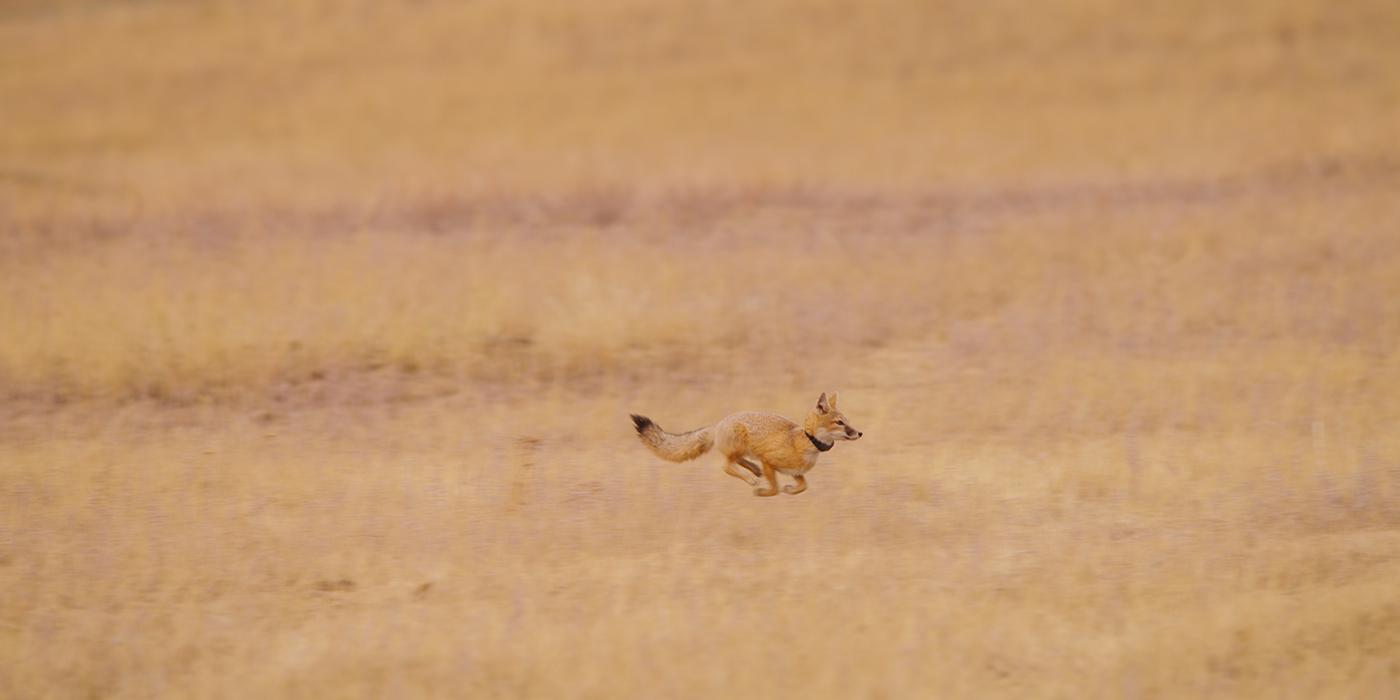Swift Fox Recovery
In collaboration with the Fort Belknap Fish and Wildlife Department in Montana, Smithsonian scientists have embarked on a reintroduction project to bring swift foxes back to tribal lands and reconnect swift fox populations.
Watch a video about their efforts:
Project Background
Swift foxes were once abundant across North America's Great Plains but have disappeared from about 60% of their historical range, due to habitat loss, as well as efforts to control rodents and predators that unintentionally impacted the foxes. They are a species of concern in most of the areas in which they still survive. Conservation efforts by the Canadian government, Blackfeet Nation, and Assiniboine and Sioux Tribes have brought swift foxes back to Alberta and Saskatchewan provinces in Canada, and northern Montana in the U.S. However, the swift fox global population is still divided into two groups separated by a gap of about 217 miles (350 kilometers).
Fort Belknap Indian Reservation is located in the homeland of the Aaniiih and Nakoda Tribes in northern Montana, within the gap in the swift fox's range. In September 2020, the Assiniboine (Nakoda) and Gros Ventre (Aaniiih) Tribes of Fort Belknap released 27 swift foxes in collaboration with the Smithsonian, Defenders of Wildlife, and World Wildlife Fund, kickstarting the five-year reintroduction project. As of 2025, researchers translocated 139 foxes, many of which have successfully bred and raised kits.
Bringing swift foxes back to this area will help bridge the gap between populations in the north and south. Connecting these groups will result in healthier and more resilient populations, conserving genetic diversity and supporting the recolonization of swift foxes across their historic range.
The ongoing project is based on an extensive feasibility study (2018-2019), which assessed habitat suitability, population viability and risk factors. A working group – consisting of more than 25 participants representing Native American communities, federal and state agencies, nongovernmental organizations, and scientists – was also formed before the project’s launch.
Milestones and Next Steps
From 2020-2024, the research team will collect 200 to 250 swift foxes from three robust populations in Wyoming, Colorado and Kansas and release them at Fort Belknap. Each fox will be equipped with a GPS collar that can transmit data over the cellular network, or via satellite communication. The foxes will be monitored for at least 12 months, so researchers can track their movements and understand their survival rates.
The team will analyze how far foxes travel from release sites, their home-range size and the resources they select. They will compare the data with source populations, past reintroduction efforts and habitat models. To estimate the density of swift foxes living in the area annually, researchers plan to set up remote cameras with lures designed to attract foxes. Capturing the foxes on camera will help to document their distribution as they reproduce and raise kits. Scientists will also collect DNA samples from swift fox scat, which they can use to identify individual foxes, as well as their sex and pedigree.
Remote cameras will also detect other wildlife, including carnivores that may compete for resources or prey on swift foxes. Coyotes (Canis latrans) are known to compete with swift foxes. It is hypothesized that the red fox (Vulpes vulpes) may also out-compete the smaller swift fox. However, no studies have recorded interspecific interactions — interactions between individual red foxes and swift foxes. The team will examine how Fort Belknap's canid communities overlap and how swift fox populations are affected by coyotes and red foxes. The data will help the team select release locations at Fort Belknap, as well as support future efforts to restore swift foxes.
Researchers will also use human dimensions surveys — aimed at examining attitudes, preferences and behaviors — to understand people's attitudes toward swift foxes and wildlife reintroductions. Students from the Aaniiih Nakoda College will assist with the surveys, resulting in deeper community engagement and a better understanding of how social tolerance may vary and influence the success of reintroduction projects.
The swift fox reintroduction project is a collaboration with Fort Belknap Indian Community and Fort Belknap Fish and Wildlife Department; The Bureau of Indian Affairs; Defenders of Wildlife; World Wildlife Fund; American Prairie Reserve; Clemson University; Calgary Zoo; Wyoming Game and Fish Department; Colorado Parks and Wildlife; Kansas Department of Wildlife, Parks and Tourism; and Little Dog Wildlife.













